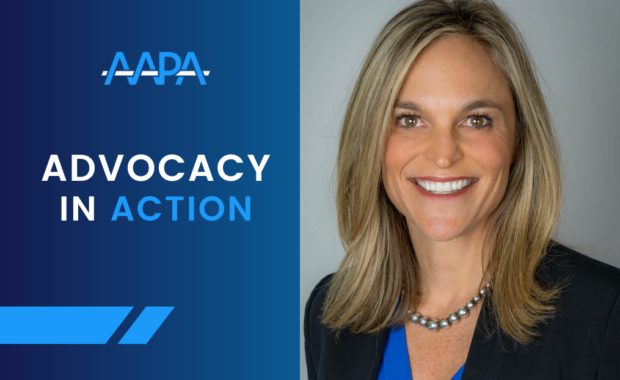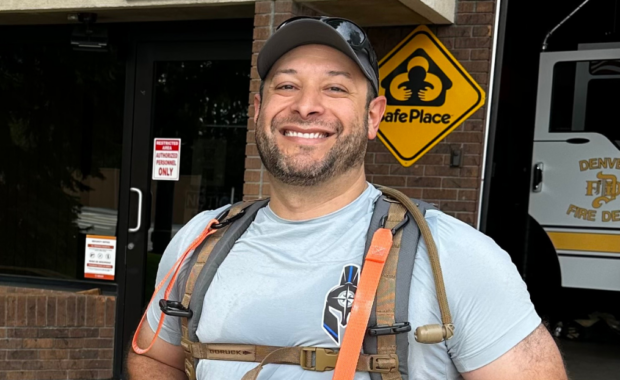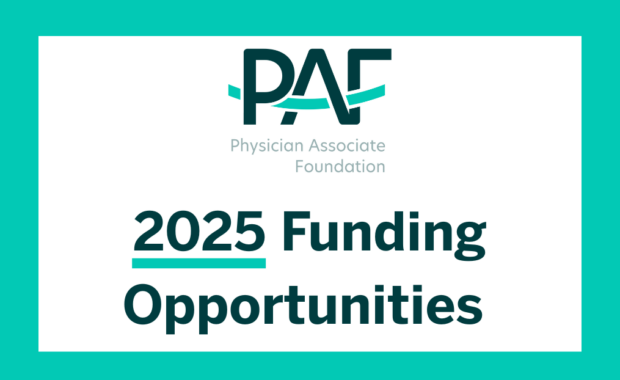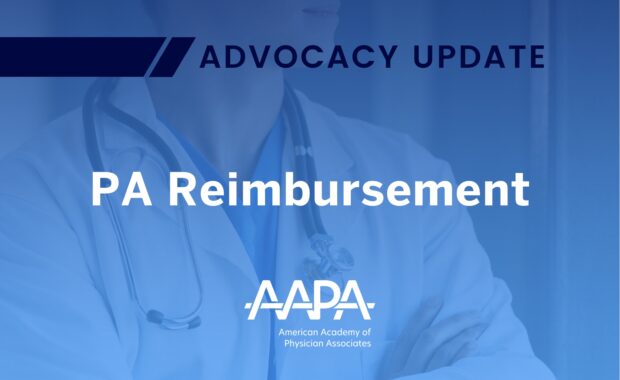Living the Dream
A Day in the Life of a PA in Clinical Research
By Holly West, DHEd, MPAS, PA-C
Never would I have envisioned myself being labeled a “Research PA.” Some (perhaps many) practicing PAs, and certainly PA students, may even cringe at the thought of research. You imagine laboratory goggles, test tubes of unknown substances and books on regulatory policies. When I was a PA educator, it was challenging to try and convince students that there was a valuable role for PAs in research. And yet, here I stand, in a new role as a PA dedicated to clinical research. I have the opportunity to collaborate with scientific masterminds, assist in writing National Institutes of Health–funded grant proposals and develop trials which will affect the future of healthcare.
A few of my primary responsibilities are:
- Coordinate and manage logistical aspects of clinical trials, including industry-sponsored and federally-funded studies regulated by the NIH and the
- U.S. Food and Drug Administration
- Communicate and interact daily with principal investigators, basic scientists, study sponsors, research nurses and coordinators, and patient subjects
- Develop grant proposals, project budgets and protocols for innovative studies
- Present to monitoring and safety committees within and outside of the institution
- Perform quality assurance and safety monitoring for human subjects
- Recruit and enroll subjects, perform H&Ps and do pelvic and ultrasonographic examinations
Here is a recent day …
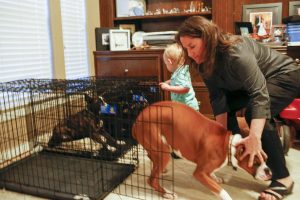
7:15 a.m.
I chase my 19-month-old Elijah around the house, which makes for a challenging start to the day. Thank goodness my mom is here filling in for our nanny. I get him dressed, fed, and kissed; corral the dogs (yes, three of them) into the kennels and head out the door.
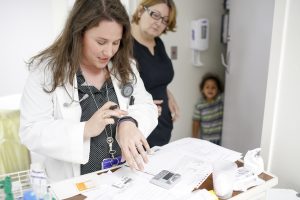
8 a.m.
I arrive at the University of Texas Medical Branch (UTMB) in Galveston and head to my office in the OB/GYN Perinatal Research Division. There is never a consistent schedule of events in our division, which I find exciting. Continually checking my phone for emails and texts keeps me engaged throughout the day.
I grab my white coat and make my way to the hospital to check on our study patient, who is undergoing a 12-hour pharmacokinetic (PK) study to evaluate the effects of medication dosing in pregnancy. The research nurses started the study at 7:30. I receive updates, write orders, approve labs and visit with the patient, whom I had met previously at one of our off-site clinics. Everything looks great thus far and I thank the nurses and staff before heading back downstairs.
8:45 a.m.
I receive a text from one of my physician investigators, who is in between scheduled cesarean deliveries in Labor and Delivery (L&D). We make a decision regarding a new research protocol and I head back to my office to add the information to my “to-do” list. I grab coffee and get ready to meet with the OB/GYN department chairman, Gary D.V. Hankins, MD. My colleague and I discuss how we plan to staff one of his new studies, involving patients diagnosed with preterm labor.
9:30 a.m.
A history and physical is needed on our study patient upstairs. I change into scrubs and collect reimbursement funds to give our study subject for participation.
9:45 a.m.
I complete a brief exam on our study patient and document the findings. In research, we utilize both paper charts and electronic charts/databases.
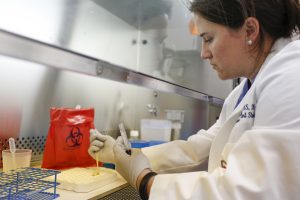 10:00 a.m.
10:00 a.m.
A research coordinator collects blood and centrifuges the specimen for processing. I assist when I can, especially when there are multiple samples to process. While she is working on other tasks, I walk the samples to our perinatal research division freezer room. Here we store research specimens in – 80 degree Celsius freezers for future analysis.
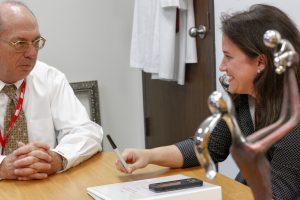 11:00 a.m.
11:00 a.m.
My stomach reminds me that food is needed and a granola bar does the trick. I eat while discussing recent updates with a colleague. After answering several emails, I log on our university’s Institutional Review Board (IRB) site to check on the status of a pending study.
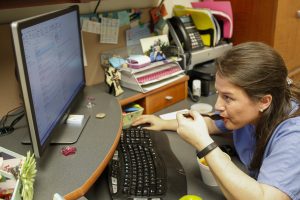 Noon
Noon
As I head down to the cafeteria, my fitness band alerts me that I have met my step goal for the day already! Woohoo! I grab soup and an apple for an efficient lunch over emails. On my way back upstairs, I check in with my mom to see how Elijah is doing. He is great!
12:15 p.m.
Sitting down is wonderful. I have just enough time to prepare an agenda for a conference call involving several research nurse coordinators from our off-campus clinics. However, I am distracted by one of the PIs asking for a budget modification on a grant application. Changes are made and the budget is recalculated and resent.
2 p.m.
Conference call with coordinators. We talk about current and future studies. I am reminded of how wonderful it is to work with great people!
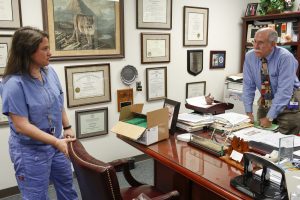
3 p.m.
Realizing my coffee is still sitting on my desk, I know an alternative source of caffeine is necessary. Fortunately, on my way to check in on the research team and patient upstairs, I grab a “free” coke from the department vice chair’s office (who happens to be my dad). I fill him in on our new L&D study, which could involve his patients. We arrange a time for me to inform the providers at the upcoming staff meeting.
4 p.m.
My husband texts me saying he is leaving downtown Houston. That means I have a little more time to finish my day because swim lessons start at 5:30 p.m.
 4:40 p.m.
4:40 p.m.
In an attempt to clean off my desk before leaving, I go through unopened mail. One of the packages contains a nice surprise—it’s a book! And it happens to be my favorite book because my dad and I wrote the 40th chapter together, on amenorrhea and abnormal uterine bleeding. As a physician and father of two PAs (one in neurosurgery), he has always advocated for the profession. And in this sea of authors with “MD” credentials, stands one “PA-C.” I take a picture, close the book, and reflect on the endless opportunities for PAs.
This article originally appeared in the August 2015 issue of PA Professional.
Thank you for reading AAPA’s News Central
You have 2 articles left this month. Create a free account to read more stories, or become a member for more access to exclusive benefits! Already have an account? Log in.
